All disruption and profitable innovation is driven by changes in product-market fit. Any time a new product is introduced and starts selling like wildfire or a company suddenly outperforms its competitors, there is a change in product-market fit powering the process.
And, there are only three ways that product-market fit can change. If you understand these modes, you understand 100% of the possible ways that one product can become more competitive than another, in all product categories, in all markets, and for all time.
The three modes are:
- Change the performance of the product along one or more value dimensions.
- Change the weight of one or more value dimensions
- Add (or Remove) Value Dimensions
Let’s look at them one at a time.
This is the most common kind of change – simply making a product better in an existing value dimension. Examples include making the product smaller, bigger, lighter, heavier, faster, cheaper, more durable, more reliable, more delicious, more intelligent, more beautiful, more prestigious, gluten-free, simpler, sexier, and lower fat.
Let’s see what this type of change looks like in a Q-PMF diagram. We’ll pretend that there are two products, called Blue and Orange, that are competitors in a market. Let’s say that before the change, the Blue and Orange products are competing head to head, like this:
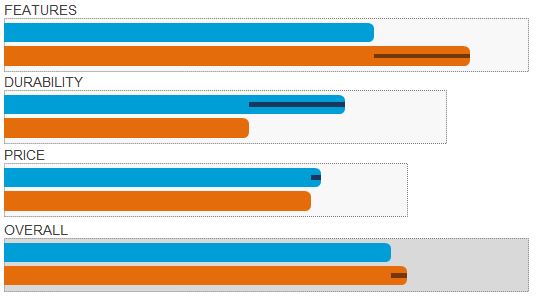
Although Orange has higher performance in the most important value dimension (FEATURES), it’s overall Delta-V is minimal because it under-performs Blue in two important secondary dimensions (DURABILITY and PRICE).
Now look what happens if Orange can close the performance gap in the DURABILITY dimension:
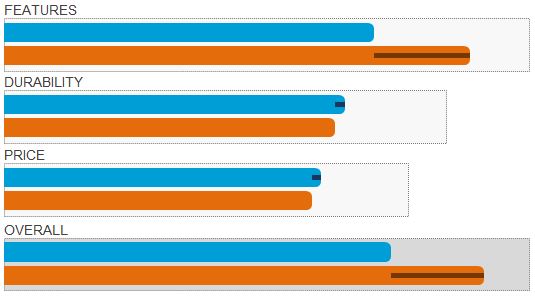
Now Orange has a significant overall Q-PMF advantage. Note that Orange does not need to out-perform Blue in the Durability dimension; Orange just needs to reduce the competitive deficit so that FEATURES becomes the only real point of comparison for customers.
Christensen refers to performance enhancing improvements as “Sustaining Innovations.”
It takes two to tango, and it takes both product and market to make Product-Market fit. A change to the weight of a value dimension is a change in market attitudes. Product changes certainly can drive attitude changes, but so can marketing campaigns, economic booms and busts, new competitive offerings, and cultural change.
For example, let’s look at what might happen to the relative Q-PMF of two products in an economic recession. Let’s say that before the recession, the Q-PMF situation for products Orange and Blue looks like this:
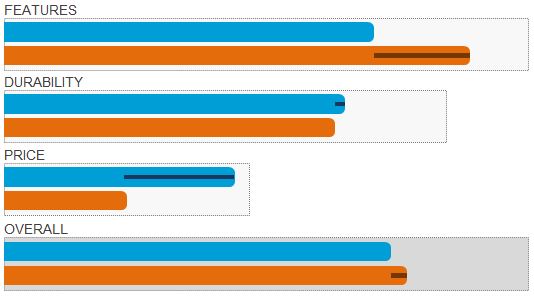
Orange has better features but is more expensive (as shown by it’s relatively poor performance in the PRICE value dimension). Because customers feel that FEATURES are more important than PRICE, Orange has an overall Delta-V advantage.
Then, along comes the recession. People everywhere are pinching pennies. A change in customer attitudes results in a change in the Customer Value Model, and now PRICE is the most important value dimension:
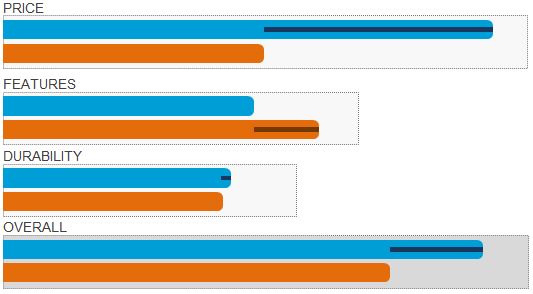
Suddenly Blue has much higher fit than Orange. With this swing in Delta-V Blue grabs significant market share from Orange.
Note that neither product changed in this scenario. But the market changed, and the product that once had lower Q-PMF now has the Q-PMF advantage. If Blue can take advantage of the increased market share to improve product features, it can probably hold onto its position even when the recession ends. On the other hand if Orange can cut prices, it can maintain it’s previous advantage and hold market share through the recession.
There is one more way that Product-Market Fit can change. It’s a big one — it is at work in many of the most dramatic cases of disruptive innovation.
Let’s return to our Orange and Blue products. Here they are, back in neck and neck competition with minimal Delta-V:
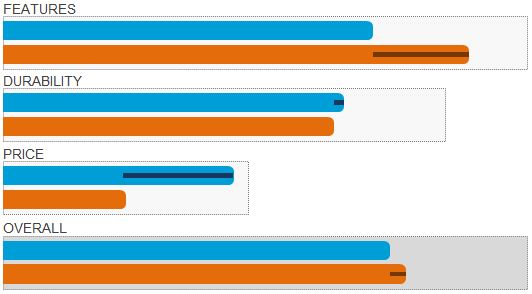
Let’s say that Blue introduces a new Value Dimension: STYLE. Let’s also say that STYLE rapidly becomes a dimension that carries a lot of weight with customers. Here’s what happens:
Not a good situation for Orange. Caught off guard, they have very little performance in the new dimension. They didn’t even know that people cared about it, because people didn’t care about it — until Blue made them care. Blue had to raise prices a bit and lost some of their price advantage, but that impact is completely overwhelmed by the massive Delta-V boost they got by disrupting the customer value model.
Whenever there is a change in the competitive landscape for any product, one or more of these three modes of PMF change is behind it. This is true 100% of the time. It always has been, and always will be. It is the 2nd Law of Disruption.
NEXT: The Five Moves in the Innovator’s Playbook